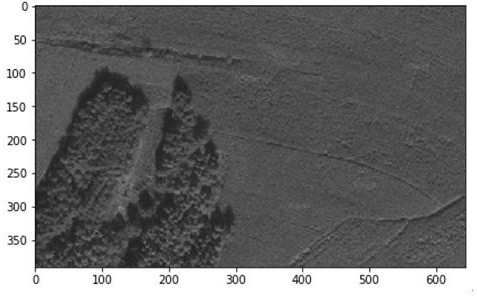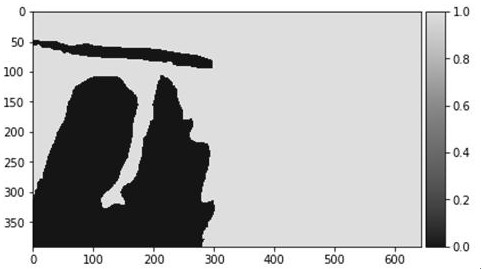Vegetation classification method of remote sensing image based on gradient scale interval change regular operator
A technology of remote sensing images and changing rules, applied in the field of remote sensing images, can solve problems such as difficulties, failure to find better parameters, difficulty in obtaining classification results, etc., and achieve the effect of improving accuracy
- Summary
- Abstract
- Description
- Claims
- Application Information
AI Technical Summary
Problems solved by technology
Method used
Image
Examples
Embodiment 1
[0088] A method for classifying vegetation in remote sensing images based on a gradient scale interval change rule operator according to the present invention includes the following steps:
[0089] S1, input the multi-band remote sensing image Image, obtain the width Width of the image, obtain the height of the image, obtain the segmented image brightness variable SingleImage, obtain the brightness discrimination variable Qufen, and obtain the brightness discrimination tolerance variable Quefenrong;
[0090] S101, input a multi-band remote sensing image Image;
[0091] S102, obtain the width of the image Width= the width of the Image; obtain the height of the image Height= the height of the Image; obtain the number of bands of the image Bands= the number of bands of the Image;
[0092] S103, create a segmented image brightness variable SingleImage=create a two-dimensional array whose width is Width and height is Height, and the value of all elements of the array is 0;
[0093...
Embodiment 2
[0161]S1, input the multi-band remote sensing image Image, obtain the width Width of the image, obtain the height of the image, obtain the segmented image brightness variable SingleImage, obtain the brightness discrimination variable Qufen, and obtain the brightness discrimination tolerance variable Quefenrong;
[0162] S101, input a multi-band remote sensing image Image;
[0163] S102, obtain the width of the image Width= the width of the Image; obtain the height of the image Height= the height of the Image; obtain the number of bands of the image Bands= the number of bands of the Image;
[0164] S103, create a segmented image brightness variable SingleImage=create a two-dimensional array whose width is Width and height is Height, and the value of all elements of the array is 0;
[0165] S104, the initial stage counter InitCounter=1;
[0166] S105, temporarily store the single-band image variable TempImage=read the content of the InitCounter band of Image;
[0167] S106, te...
PUM
 Login to View More
Login to View More Abstract
Description
Claims
Application Information
 Login to View More
Login to View More - R&D
- Intellectual Property
- Life Sciences
- Materials
- Tech Scout
- Unparalleled Data Quality
- Higher Quality Content
- 60% Fewer Hallucinations
Browse by: Latest US Patents, China's latest patents, Technical Efficacy Thesaurus, Application Domain, Technology Topic, Popular Technical Reports.
© 2025 PatSnap. All rights reserved.Legal|Privacy policy|Modern Slavery Act Transparency Statement|Sitemap|About US| Contact US: help@patsnap.com



